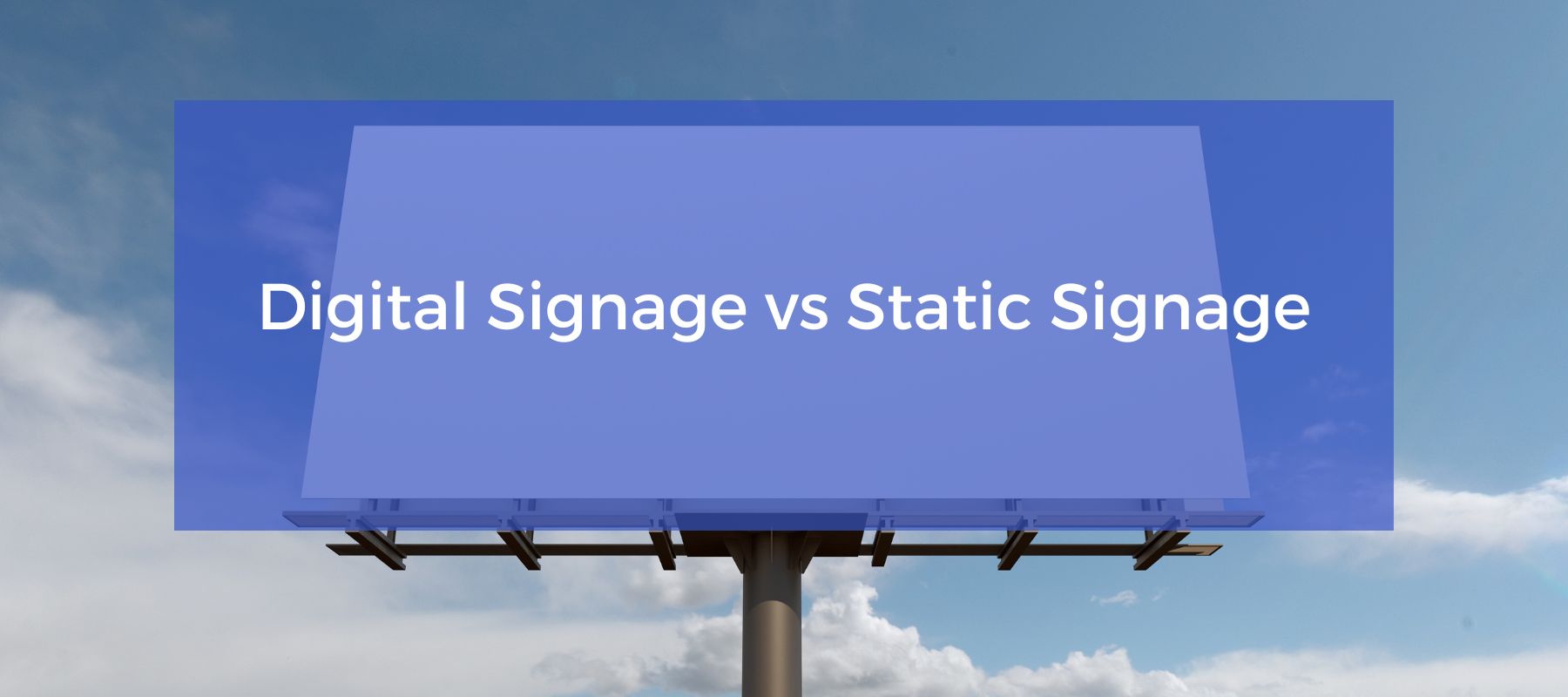
Digital Signage vs Static Signage
Digital signage and static signage can be effective in helping companies promote their goods or services, but they also come with their own unique advantages and disadvantages.
In this article, we will provide an overview of both types of signage and compare them side-by-side to help you make the best choice for your organization.
Digital Signage
Digital signage is an electronic display that can be used to show images, video, and other information. It is very versatile, able to be utilized in many different types of settings such as retail stores, corporate offices, restaurants, educational institutions, theaters, and manufacturing environments. In industrial settings, Manufacturing dashboard software can transform digital displays into real-time performance monitors, enhancing productivity and communication on the shop floor.
Advantages of Digital Signage
Digital signage is an incredibly powerful tool when it comes to communication, especially in the business world. It provides a variety of advantages that make it an ideal choice for businesses looking to improve their communication and marketing efforts:
Flexible
Digital signage provides businesses with a high degree of flexibility in terms of content delivery. Content can be easily updated in real-time to keep up with changing trends and customer needs and can be tailored to different audiences at different times of the day or even within the same location.
Engaging
Digital signage provides a more visually stimulating experience for viewers than traditional advertising methods. This ultimately leads to higher customer engagement and retention rates across industries.
Convenient
Digital signage is incredibly convenient for both businesses and customers alike. It eliminates the need for the distribution of materials, saving both time and money. Furthermore, customers can access relevant information quickly with just a few simple clicks.
Disadvantages of Digital Signage
While digital signage is being used increasingly, it does not come without its cons.
Expensive
Although initial setup costs can be relatively low, the ongoing cost of running a digital signage system can be expensive. This includes costs for additional equipment, software, content creation, and support services which can add up quickly over time.
Maintaining all this in-house can be costly and time consuming. That’s why it’s always worth looking into an all in one solution and making sure you compare that to the real cost of managing your signs in house.
Prone to Technical Issues
Digital signage can be susceptible to technical issues, such as hardware failures or software glitches that can cause disruption to your business operations. These can be difficult and expensive to fix, especially if you don't have the necessary expertise in-house.
Additionally, content that is not updated regularly can cause digital signage to become a static element in your environment, making it less impactful and valuable for customers. As such, it's important to have a plan in place that ensures content is changed on a regular basis.
Lacks Security
Finally, digital signage can be vulnerable to malicious attacks, as it is connected to the internet and thus can be hacked into. This means that sensitive data, such as customer information or company secrets, could potentially be compromised.
It's important to ensure that your digital signage system is secure and protected against potential threats.
Static Signage
Static signage is a type of traditional physical sign that is not intended to be changed or updated often. This type of signage includes billboards, banners, and other advertising materials such as posters, leaflets, and brochures. These static signs are typically used for long-term promotions or campaigns since they do not require frequent changes like digital signage.
Advantages of Static Signage
Static signage offers a range of advantages over digital and other forms of signage.
Low Maintenance
Unlike digital signs, which require electricity to operate and may be subject to technical issues, static signs can last for years without requiring maintenance or intervention.
Cost-Effective
Static signs are much more cost-effective than digital options, as they are usually cheaper to install and do not need ongoing electricity expenses. They also do not require a computer or other expensive equipment to operate and can be seen from farther away than digital signs.
Secure
Static signage is more secure as it cannot be hacked or altered without physical access. This makes it an ideal choice for locations that need to maintain their message integrity, such as political campaigns or security-sensitive sites.
Durable
Static signage is more durable than digital signs and can withstand harsh weather conditions or other environmental factors such as UV light or extreme temperatures. This means it remains visible in a wide range of settings, providing flexibility for any business.
Disadvantages of Static Signage
There are some factors that make it difficult for businesses to effectively use static signage in their marketing and advertising strategies.
Limited
Static signage can be limiting in its design and messaging, with no ability to adapt the content to specific audiences. It is also difficult to measure the effectiveness of static signage on sales or customer engagement, making it hard to determine if the investment is worthwhile.
High Maintenance
Static signage can also be difficult to update or change as needed, requiring additional effort and resources. Digital signage offers a much more dynamic approach which allows businesses to quickly adjust content based on customer feedback or changing market trends.
Invest in the Right Signage Solution for Your Business
Digital signage and static signage are both viable options for advertisements depending on the goals of your business.
Digital signage can provide a more dynamic and engaging experience while offering flexibility to switch messages quickly. It can be used to capture analytics such as viewer counts and dwell time which can be used to optimize campaigns.
On the other hand, static signage can provide a more cost-effective and low-maintenance solution with the ability to target larger audiences.
Ultimately, it is important to assess the marketing goals of your business and determine which type of signage will best fit your needs.
More From Our Blog
-

Screen Sharing for Workplace Collaboration | Rise Vision
Screen-sharing technology has transformed how teams communicate and work together in real-time, regardless of their location. It can make presentations more engaging, support remote work, and speed[…]
Read More -

How to Use PowerPoint for Digital Signage
To create stunning, attention-grabbing, and effective digital signage content, you need the help of content creation and presentation tools. One of the most popular is Microsoft PowerPoint, owing to[…]
Read More -

120 Digital Signage Content Ideas
So…. you decided you would invest in some digital signage software and you need some ideas for ways you can make it stand out. This article is your go-to source for the best digital signage content[…]
Read More
Keep Your Displays Interesting – Pick New Templates Every Week!
Every week, we send template recommendations that will make you look great and improve your audience experience. And the best part, they save up to 16 hours of content creation time every week!
12,300+ Organizations Trust Rise Vision, You Can Too
Schedule a Free Demo
You deserve the #1 all-in-one platform for digital signage, screen sharing, and emergency alerts.



































